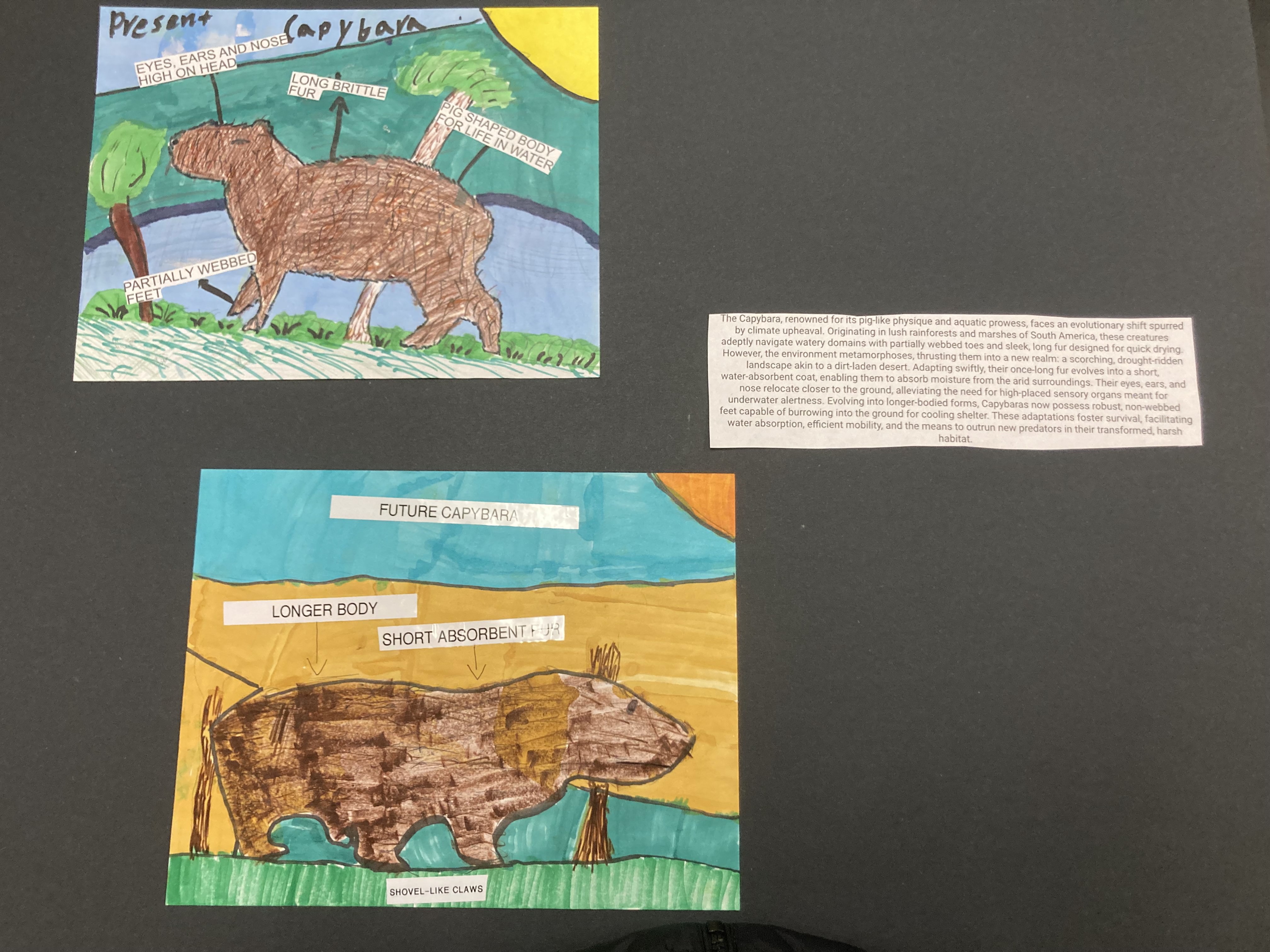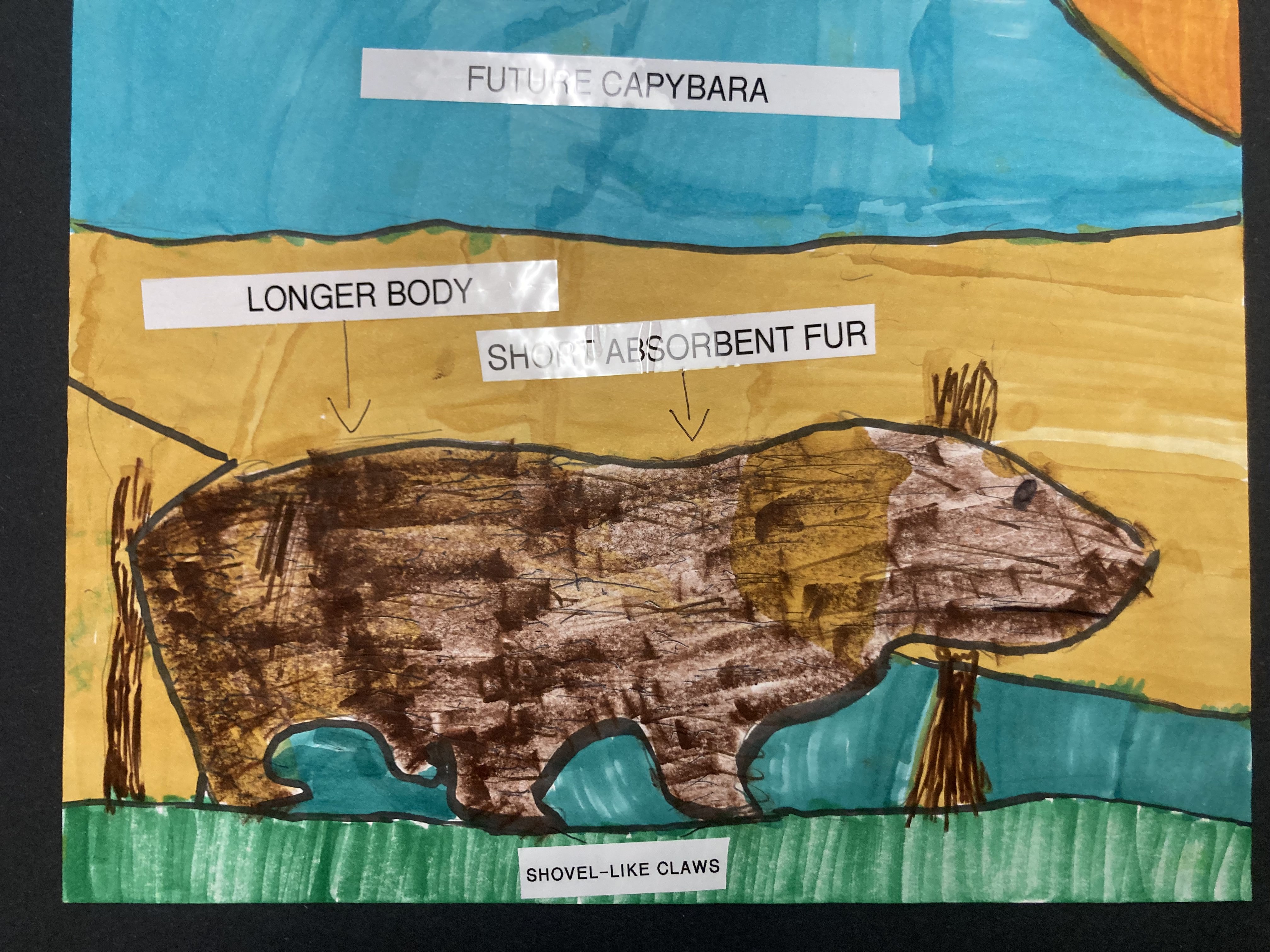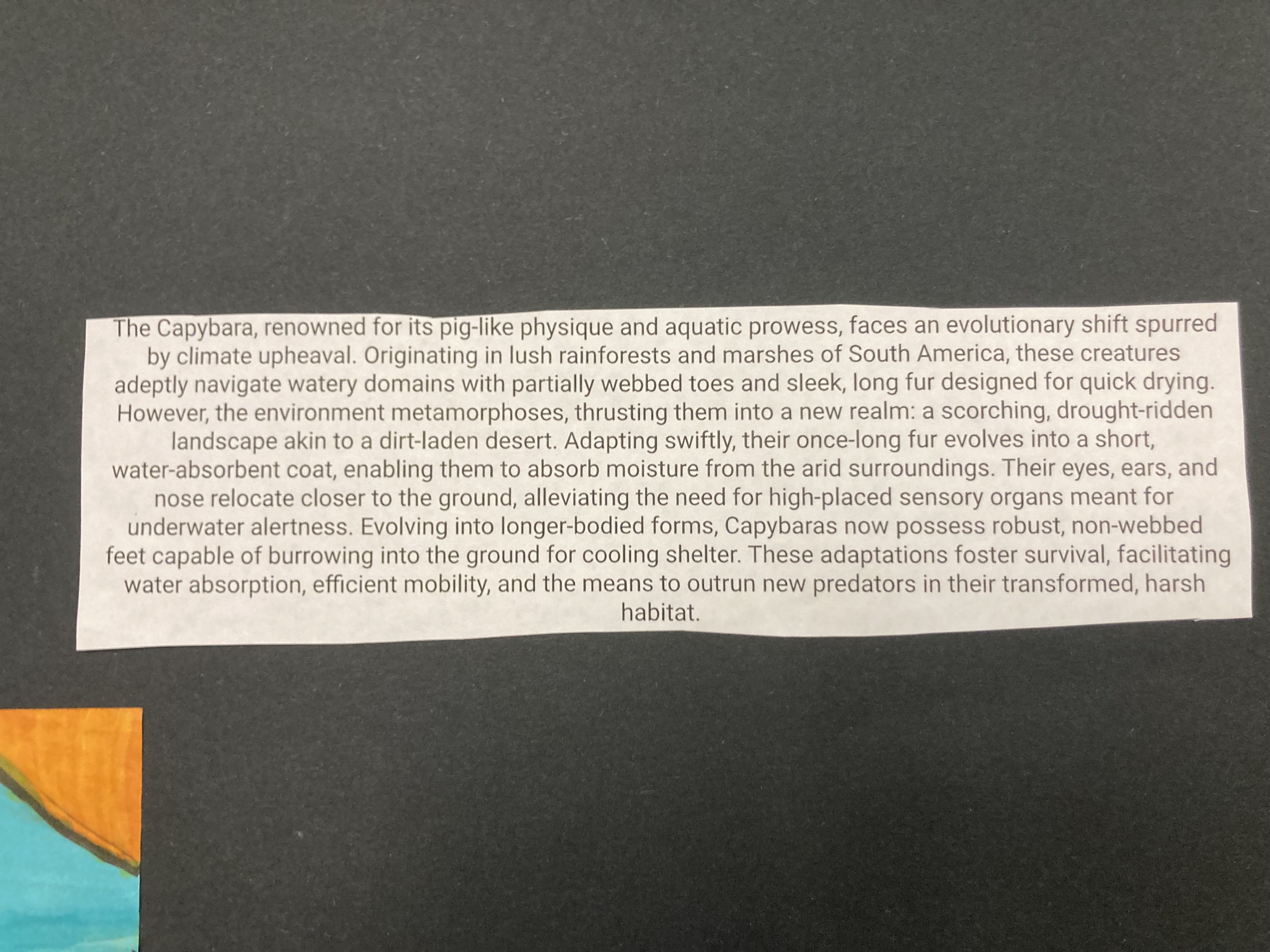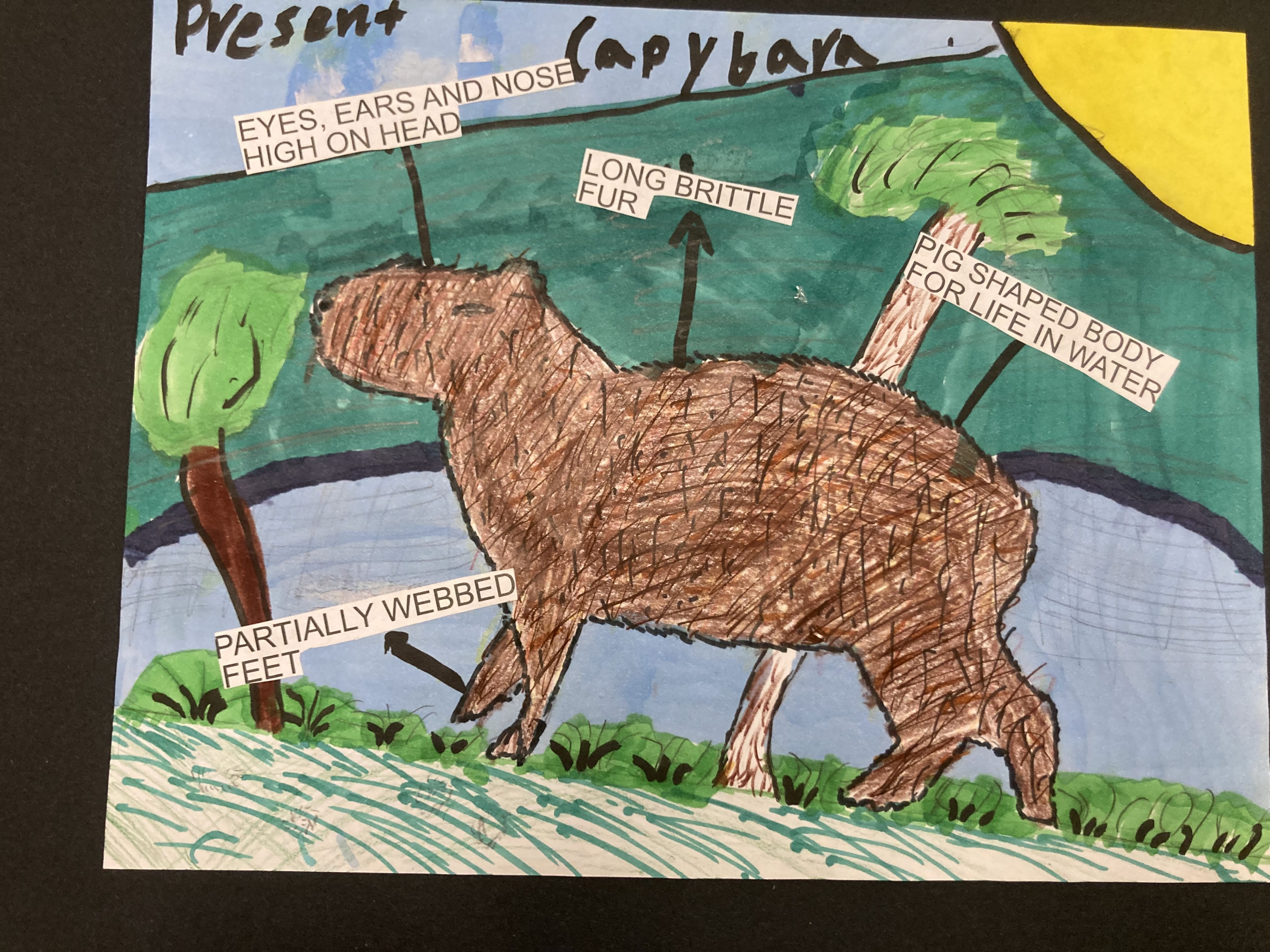Capybara, renowned for its pig-like physique and aquatic prowess, faces an evolutionary shift spurred by climate upheaval. Originating in lush rainforests and marshes of South America, these creatures adeptly navigate watery domains with partially webbed toes and sleek, long fur designed for quick drying.
However, the environment metamorphoses, thrusting them into a new realm: a scorching, drought-ridden landscape akin to a dirt-laden desert. Adapting swiftly, their once-long fur evolves into a short, water-absorbent coat, enabling them to absorb moisture from the arid surroundings. Their eyes, ears, and nose relocate closer to the ground, alleviating the need for high-placed sensory organs meant for underwater alertness. Evolving into longer-bodied forms, Capybaras now possess robust, non-webbed feet capable of burrowing into the ground for cooling shelter. These adaptations foster survival, facilitating water absorption, efficient mobility, and the means to outrun new predators in their transformed, harsh habitat
Contact us
Thank you for your interest in contacting Future Engineers. We look forward to connecting with you!
General Inquiries
support@futureengineers.orgSponsorship Inquiries
sponsor@futureengineers.org



